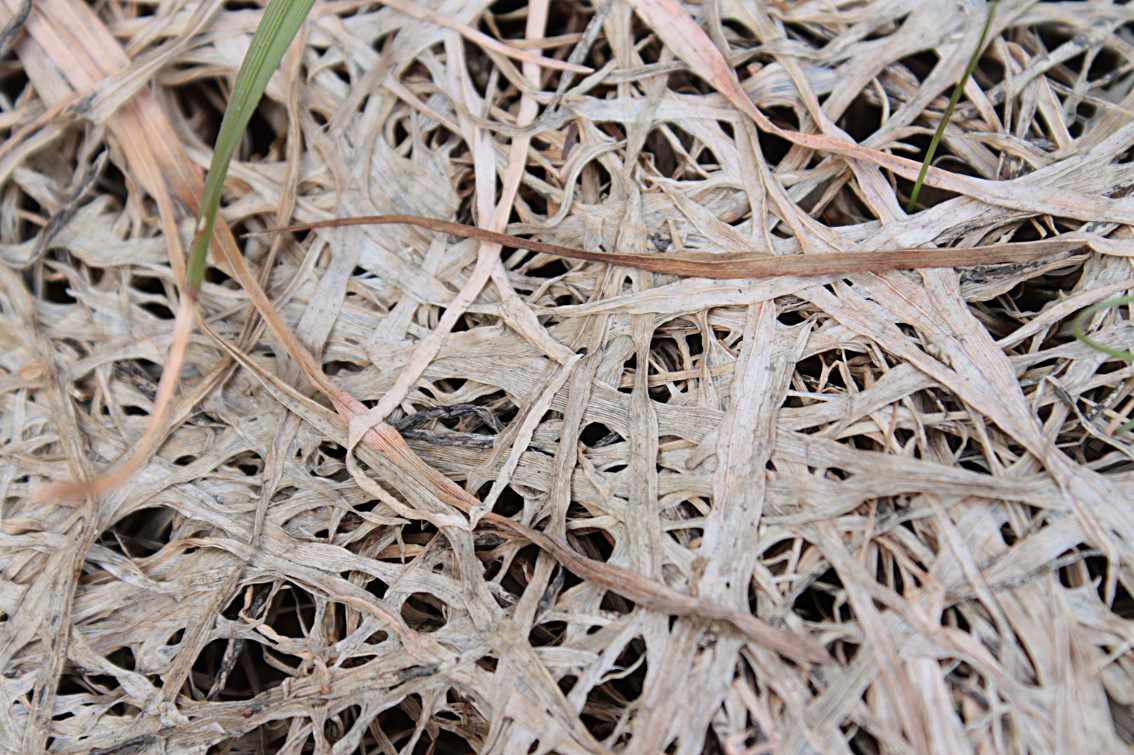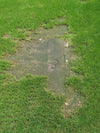
Fusarium Patch Disease
What is Fusarium Patch?
Fusarium Patch is a disease caused by the Microdochium Nivale fungus, which is naturally present in most lawns. In the right weather conditions the spores become active and create patches of yellow-brown grass which will stay dry even when dew is present in the mornings.
On close inspection, you may notice small white fibers of white or pink mould, resembling cotton wool on top of the patch. These signs of mould are the key indicator that the patch is indeed a result of fusarium patch. If you don’t see any signs of mould, try covering a patch overnight: if mould does not appear by the morning the discoloration is likely not a result of fusarium.
What causes fusarium patch?
Fusarium patch spores are present in most lawns all year round, as they are easily carried by the wind and often present in the soil, where they help decompose dead matter and maintain a healthy balance. However, they are only identifiable when they become active and cause damage to your lawn.
The disease develops during autumn and winter when conditions are mild and wet, daylight hours are limited, and there is less air movement. Fusarium Patch is also known as ‘snow mould’ as it often develops while the lawn is covered in snow, which creates a layer of insulation for the grass. Fusarium is mostly seen in lawns that are weak and stressed, mown very short, or newly laid. Healthy established lawns are less likely to suffer from the disease.
Because the spores of fusarium patch have a very short incubation period, a lawn that shows no apparent sign of disease one minute can have extensive fusarium issues the next. Dry brown spots can appear and grow rapidly, often overnight.
How to treat fusarium patch?
Fusarium patch may well go away on it’s own when the weather conditions change and the temperatures drop. Winter frost is an effective remedy to fusarium patch. The brow patches left behind will naturally right themselves through the next growing season, although reseeding may be necessary if the damage has been extensive.
Fungicide can be used to treat fusarium, but it will need to be applied by a professional and often one application is not enough.
How to prevent fusarium patch?
The best way to keep fusarium patch and other diseases at bay is to keep your lawn healthy, which will help it overcome and outgrow diseases. Mow your lawn regularly, and carry out aeration and scarifying to maintain your soil in the best shape. Additionally, make sure to use the right feed for your lawn through the year. In the autumn, you’ll need a low nitrogen and high potassium feed to promote growth and strengthen the plant.
If you have noticed the disease appearing on your lawn, try to avoid walking on the grass, to avoid spreading the spores to other areas. Similarly, avoid mowing your lawn or creating any further stress that might weaken the plant. But, if you do need to mow your lawn, make sure to thoroughly clean your lawn mower and the blades after you are done, to avoid recontaminating the lawn later on.
Keeping your lawn healthy with So & Mo
The So & Mo Feeding Plan has been designed to work with your lawn through the year, keeping it healthy and resilient against diseases no matter the weather. The Performance Liquid Lawn Feed pack includes six feeds, each formulated to work with your lawn at a different time of the year. Find out more about the plan and it’s formulation here and read or visit our blog for more advice and information on keeping your lawn in top form.Ready to be proud of your garden?
Ensure your lawn never goes hungry with our personalised feeding plan. Delivered through you letterbox exactly when you need it.





